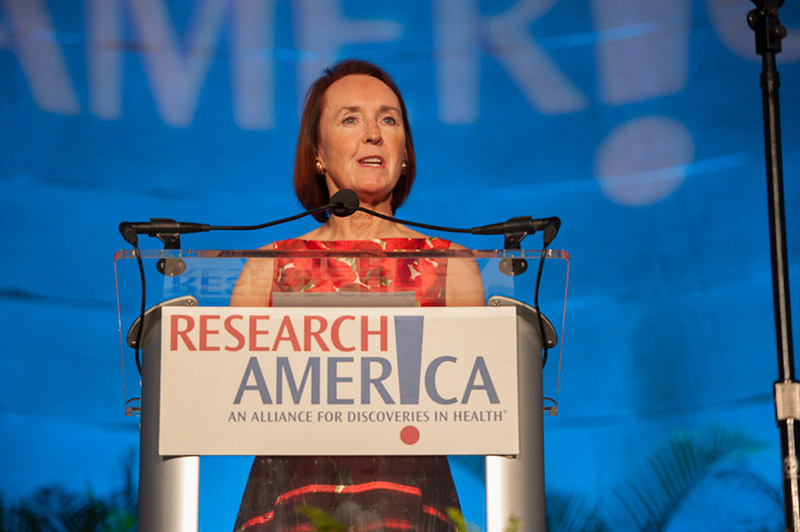Too many epidemics; too little response

 Dear Research Advocate:
Dear Research Advocate:
Research!America teamed up with the American Society for Microbiology (ASM), the American Society for Virology (ASV), Dr. Anthony Fauci and Dr. Nancy Messonnier on Monday for a briefing focused on vaccines and other facets of pandemic preparedness. The program, which coincided with the launch of a compelling Smithsonian exhibit entitled Outbreak, proved to be particularly resonant as news of Ebola and Nipah outbreaks proliferate. C-SPAN aired the briefing live, and it has drawn significant media interest including reports in NBC News and U.S. News & World Report.
Are you like me and hadn’t heard of Nipah until this week? The current outbreak is in India and the mortality rate of the virus is 75%. The mortality rate for Ebola is about 50%. Fast-track research put in place after the 2014 outbreak offers new hope in the case of Ebola: a promising vaccine is in use in the Democratic Republic of the Congo.
Our program Monday included a look at the results of a relevant new public opinion survey, from which the news is mixed: for example, while two-thirds of the American public (67%) are confident that the current system ensures an adequate supply of necessary vaccines to prevent shortages, that’s actually an 11-percentage point drop from the results of a similar survey we commissioned in 2008. And only 59% of Americans say they strongly believe they have benefited from the development of vaccines over the last 50 years, a 16-percentage point decrease from 2008.
The positive side of “mixed” includes an uptick in the percentage of the public who strongly favor increased federal spending on research to improve and find new vaccines. Overall, the findings demonstrate that awareness and support for vaccinations is strong, but not guaranteed. It’s a call to action to us all to step up outreach and public education.
The FY19 House and Senate “302(b)” allocations — the topline spending levels the Appropriations Subcommittees start with when allocating agency and program level funding — have been made public, and the news there is mixed, too. One example of several: while the Senate allocated an additional $2.2 billion to the “Labor-H” Subcommittee (relevant to NIH, CDC and AHRQ), the House allocation is flat. As we asserted in a letter to House Appropriations Leadership, providing the Labor-H Subcommittee no room to increase funding for one strategic priority without cutting funding for another does not serve the national interest. Here is a chart that compares the FY18 and FY19 allocations.
Today, Greg Daniel joined alliance members for a terrific presentation, which helped bring into focus the complex topic of value-based purchasing. More in future letters on this crucial area of research/policy, which is already factoring significantly into the nature and pace of medical progress.
If your organization is an alliance member, join us next Wednesday for a meeting with House Energy & Commerce Committee Health staff. For more details and to RSVP, email Jacqueline at [email protected].
On Friday, June 1, we are partnering with the Society for Neuroscience (SfN) on a webinar from 1:00 – 2:00 p.m. ET on a fundamental advocacy question: how do we assess success? One of the featured presenters for Measuring Advocacy Outcomes is Research!America board member and former member of Congress Bart Gordon. Register here!
Even as we head into the Memorial Day weekend and the unofficial beginning of summer, we can’t afford to ignore the several epidemics ailing our nation: gun violence, opioid addiction, and emerging and re-emerging infectious diseases. It’s important for us all to speak out this summer to candidates running for Congress to make the case for research that informs safe, healthy, thriving communities. We will say more about this in the weeks ahead.
Sincerely,
Mary Woolley




